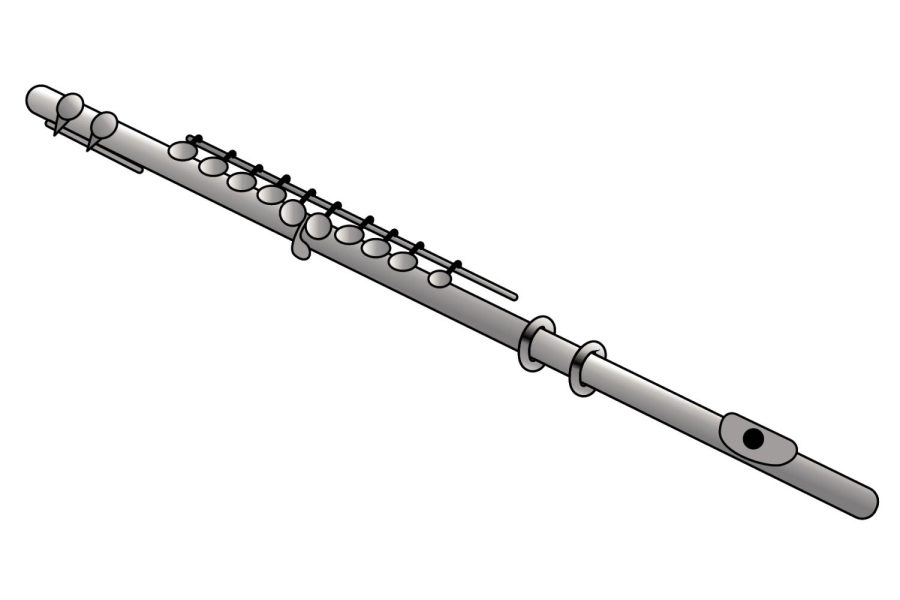Lecture For All Instrumentalists
On Feb. 23, guest speaker Dr. Timothy Hagen gave a lecture on “Finding Your Sound” in Brodbeck Concert Hall from 5:30 to 6:10 p.m. Dr. Hagen is a flutist, composer, scholar and educator.
He explained that every person’s body is unique. As a musician, a solid starting point begins by creating a relationship between the instrument and the body. This “allows for maximum resonance, flexibility and freedom,” said Dr. Hagen.
Dr. Hagen said questions that musicians should first ask themselves when developing their flexibility is who they are as a person and then what kind of sounds they value. These could be “round” or to “fill the space,” for example. These are values instrumentalists can fuse into their sound. “At the end of the day … you’re the one accountable for your sound,” said Dr. Hagen.
Dr. Hagen compared musical flexibility to acting. He said that when he is asked how he finds his sound, the first person he thinks of is Meryl Streep. He believes she effectively expresses whatever is required of the role she portrays and that she has covered a large variety of unique roles. Playing music has the same range of articulation.
Dr. Hagen said that imitating other artists will help musicians be more flexible. He suggested that instrumentalists and vocalists practice embodying the sound of musicians they like to listen to so that they can later call upon those skills and use them how they individually desire. Dr. Hagen thinks of listening as a fundamental musical skill.
Dr. Hagen emphasized that in order to blend with other instruments, instrumentalists play a sound they may not love. Dr. Hagen played his flute with a former student on stage to demonstrate. He played a lovely solo tone, but it did not blend with the student’s tone. Rather, it starkly contrasted with it. During a second take, Dr. Hagen “washed out” his flute tone with a more airy sound to blend with what the student played. Their instruments sounded like one, rather than two distinct sounds. His emphasis in the demonstration was to show that the best sound for blending with other instrumentalists is not going to be one’s best solo sound.
“There are no good and bad sounds … There is just what you intend and what you don’t,” said Dr. Hagen. As an inner dialogue example, Dr. Hagen said, “I don’t have bad pitch. I just went the wrong way. Oops! Didn’t mean to do that.”
Cultivating this mindset serves musicians well and prevents them from “shame-spiraling.” It is important not to put a value judgement on a sound, but rather to ask oneself what the intended sound is.
Dr. Hagen explained that life changes cause perspectives and priorities of individuals to change. Intended sounds may change throughout life as well. A variable in intention includes types of materials instruments are made from because of what each material offers. “Every combination of a human and instrument is going to produce a unique sound,” said Dr. Hagen.
Dr. Hagen explained that he started playing on a silver flute with thick walls which gave nuance. Later in his career, he wanted to play a gold flute with a warm sound, but it was a heavy gold and did not offer the flexibility Dr. Hagen was used to playing with musically.
Over time, Dr. Hagen missed the nuance of his silver flute. He realized that what heavy gold offers in sound fit him when he was younger, but it did not any longer. He switched to a white gold which was tempered with a different metal. Throughout his life, the sounds he valued changed.
He came to the conclusion that if he were to return to his original silver flute, he would bring a different perspective to it because of the changes that occurred within himself. He said, “You need room for yourself to grow and change even if that means you end up back at square one.”
After Dr. Hagen’s lecture, he held a flute master class in room 109 until 7 p.m. Admission was free and the whole audience attended the master class for further instruction in their instrumentalization.




